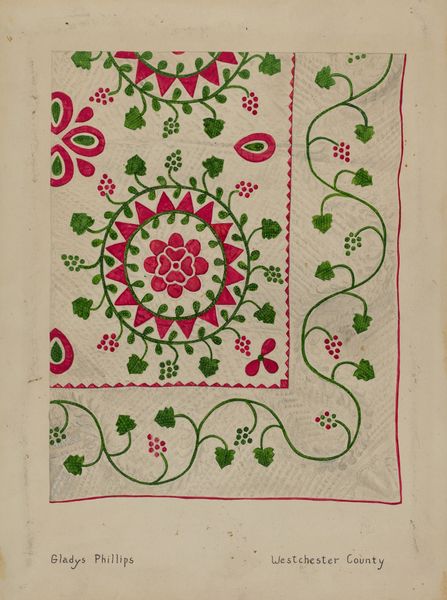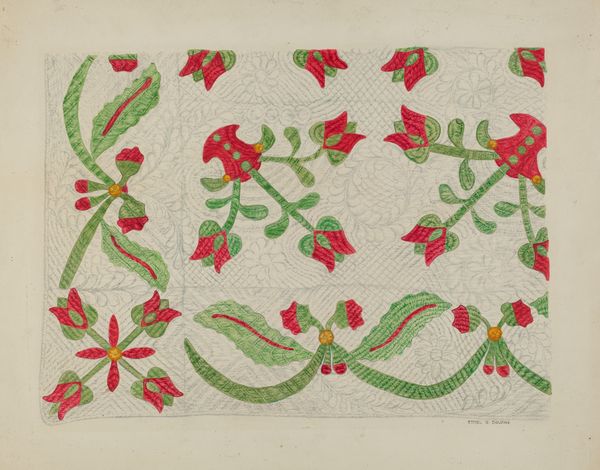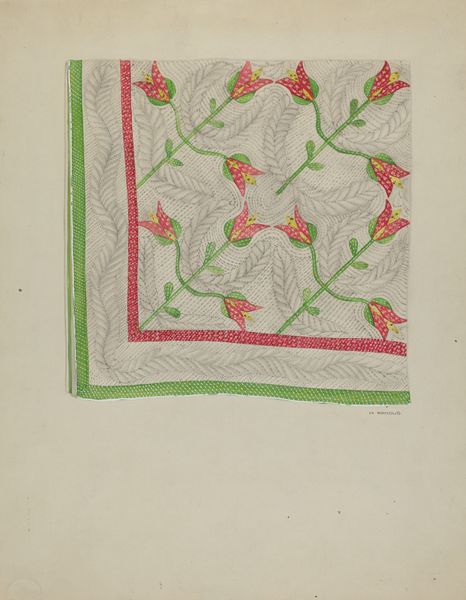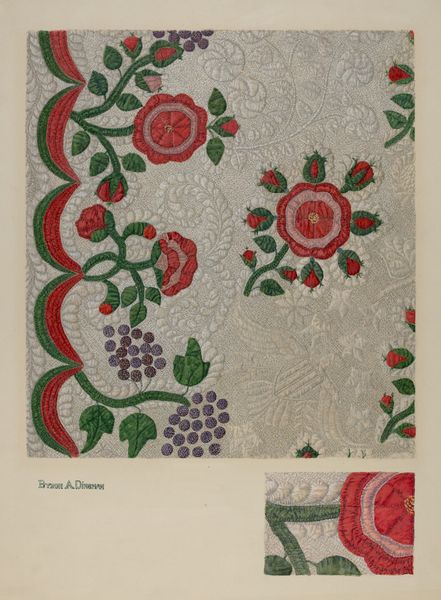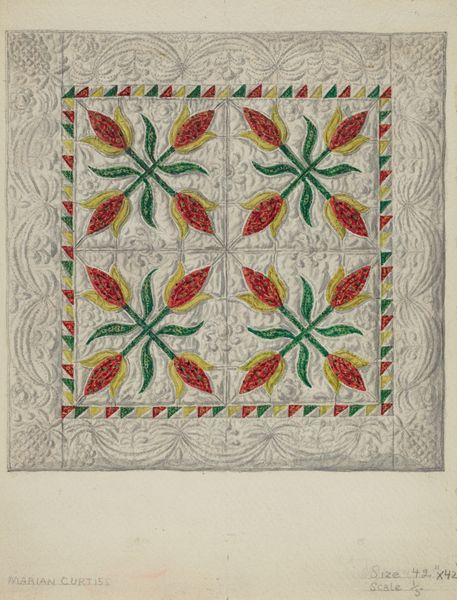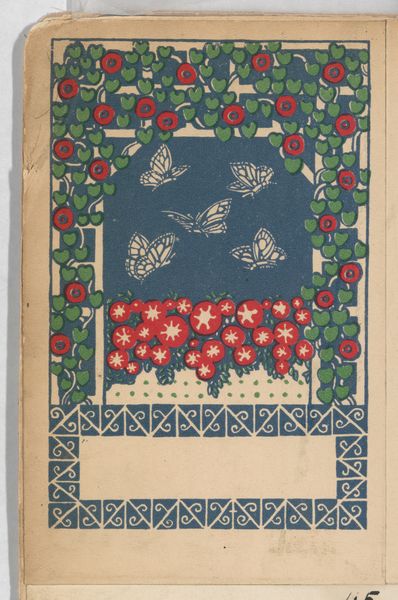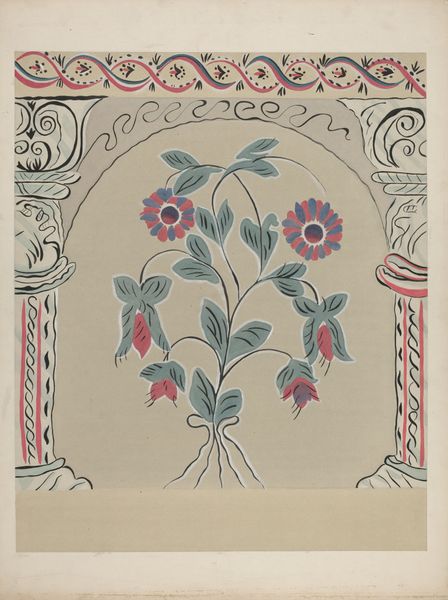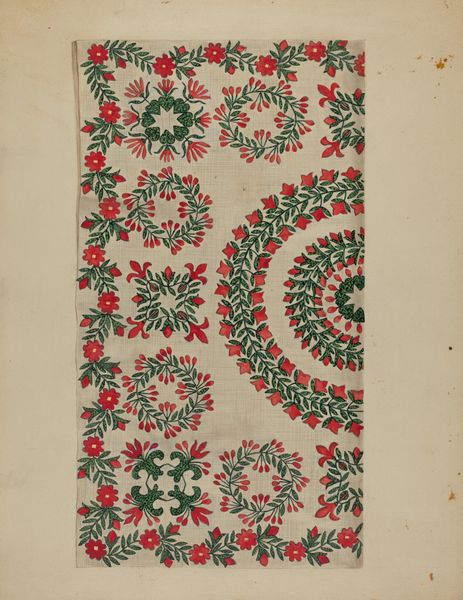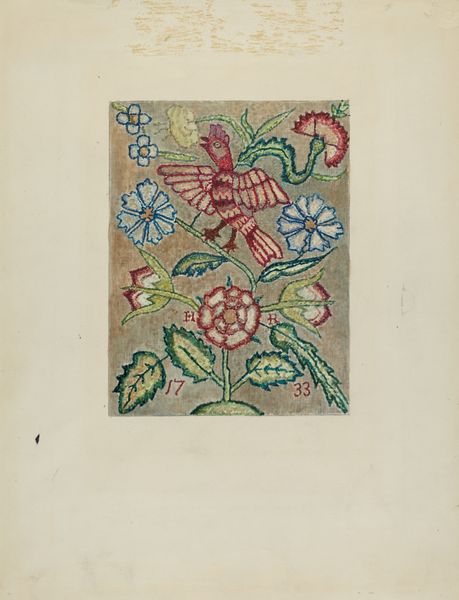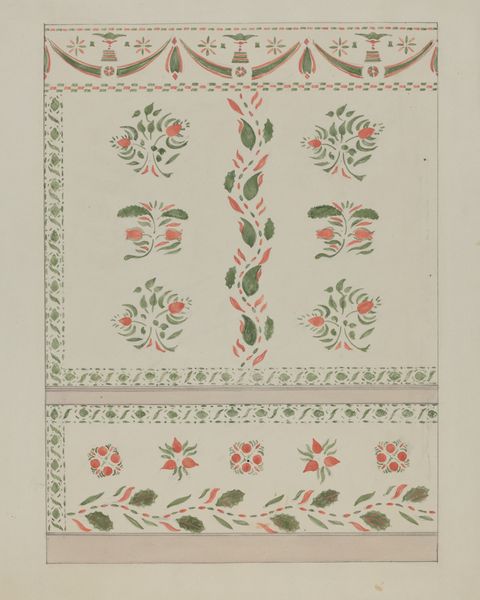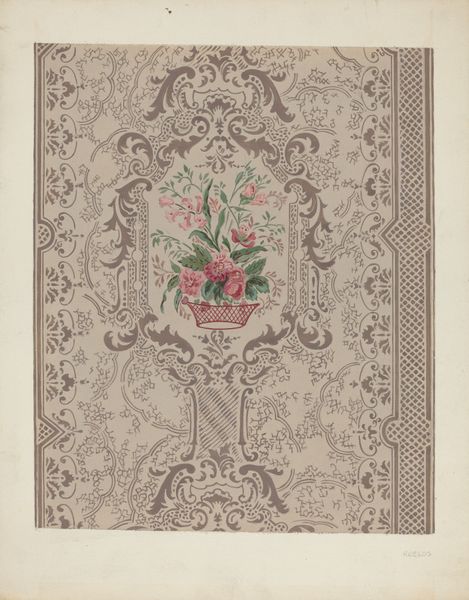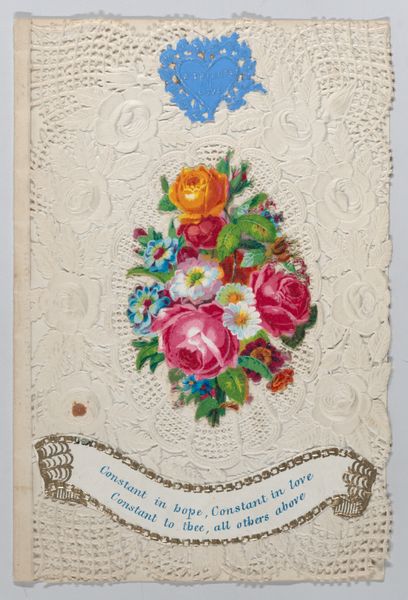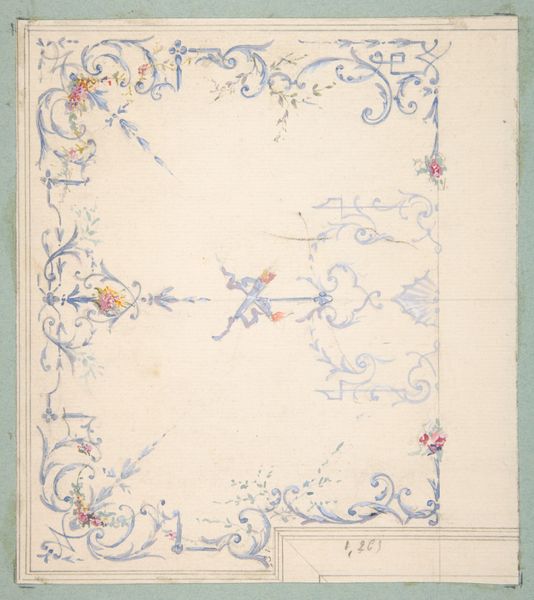
textile
#
folk-art
#
water colours
#
textile
#
folk-art
#
decorative-art
#
watercolor
Dimensions: overall: 49.6 x 41.2 cm (19 1/2 x 16 1/4 in.)
Copyright: National Gallery of Art: CC0 1.0
Curator: Before us hangs a watercolor and graphite drawing on paper representing a quilt titled "Circle with Tulips," dating to around 1937, created by Ralph Atkinson. The piece embodies elements of both folk and decorative art. My initial reaction is its calming presence—the soft color palette and repeating patterns evoke a sense of serenity. Editor: Calm, perhaps deceptively so. While aesthetically pleasing, pieces like these are laden with socio-historical weight. Quilts were often communal projects, imbued with symbolic language for hidden or ignored communities—necessitating further scrutiny to examine it through the context of class, gender, and domestic labor. Curator: Indeed, the choice of textile as medium invites considerations of its traditional association with domesticity and craft. The rendering, though, elevates it beyond mere utility. Note the meticulous rendering of light and shadow, the subtle gradations in the watercolor washes; Atkinson skillfully manipulates these elements. How would this quilt communicate those hidden narratives you describe? Editor: I suspect the repeating tulips, rendered in striking red against a muted background, speak to themes of fertility and the life cycle. Also, the circle might signal community, or collective female experience. But these textiles could also act as signifiers in the Underground Railroad. It’s important to ask: for whom was it made, and under what conditions? Was Atkinson working in solidarity or appropriating labor? Curator: The symmetry and repetition are certainly prominent. The central circular motif containing the tulips anchors the composition, lending it a sense of formal order, a satisfying gestalt. The flowing tendrils that trace the border add a touch of whimsy. This ordered structure implies a structured mind, suggesting design, careful craftsmanship. Editor: We need to also examine how the ‘idea’ of a quilt gets translated from one medium to another—what are the cultural assumptions that are attached to textiles or “craft,” particularly when reinterpreted through drawing and watercolour? Does the act of translation reaffirm existing social hierarchies that divide "high" from "low" art forms? The piece compels us to re-evaluate the canon. Curator: Perhaps a point well taken. Atkinson has taken the vernacular expression, quilting, elevated the pattern onto paper—allowing us a detached assessment based on composition and application. We can step back from its potential use or social applications, and simply find a restful visual moment. Editor: Even in that moment, one needs to stay vigilant, to resist purely aesthetic satisfaction in favor of an interrogation of systems of making—an exercise that demands critical questioning in order to understand historical agency within complex power structures.
Comments
No comments
Be the first to comment and join the conversation on the ultimate creative platform.
